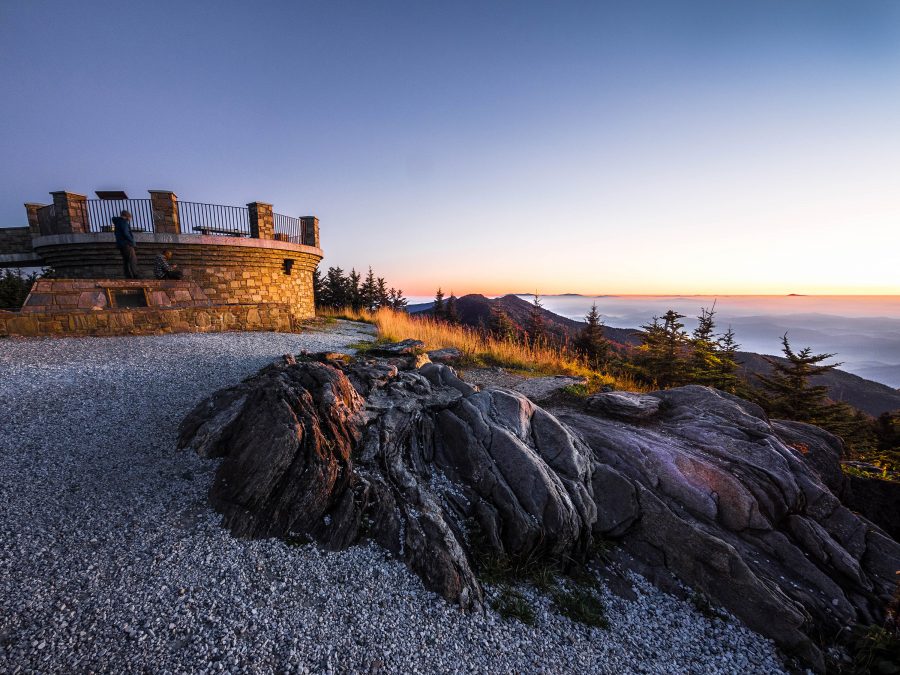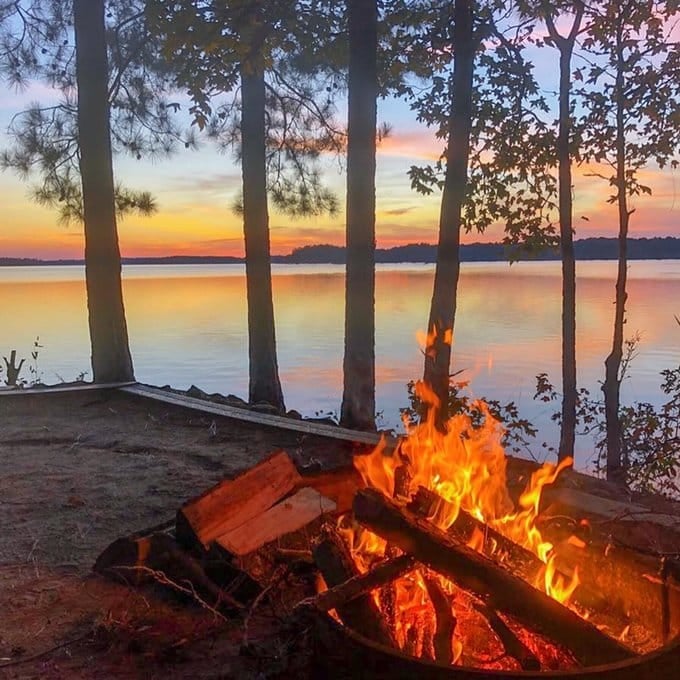Looking for some destinations to add to your list of summer travels? Forget the national parks and tourist hot spots and hit up some of our favorite state parks in this state-by-state guide!
Georgia
Tallulah Gorge State Park
How to play: This remarkable 1,000-foot gorge is highly regarded among the paddling community for its remote feel and quality class IV-V rapids, but it’s those very same reasons that make the gorge an incredible destination for hiking, cycling, and even climbing, too. Visitors can walk the easily accessible rim trails and overlooks for shorter trips, but to trek to the gorge floor where waterfalls abound, a permit will need to be obtained. Permits are limited to 100 per day, and are not available during water release dates, so know the schedule before you go. For the full Tallulah experience, hike the two-mile Hurricane Falls loop, which breezes past heady gorge views, across an 80-foot-high suspension bridge, and down to the falls for which it’s named. Cyclists can also explore the gorge via the Stoneplace Trail, a 10-mile technical trail that can be ridden in conjunction with the four-mile High Bluff Trail for a moderately difficult ride, or the paved 1.7-mile Shortline rail-trail for a family friendly outing.
Where to stay: Backcountry campsites by Tallulah Lake start at $20 per night, but for visitors who want at least a few of the comforts of home (and without the two-hour hike in), there are plenty of campground sites starting at $32 per night.
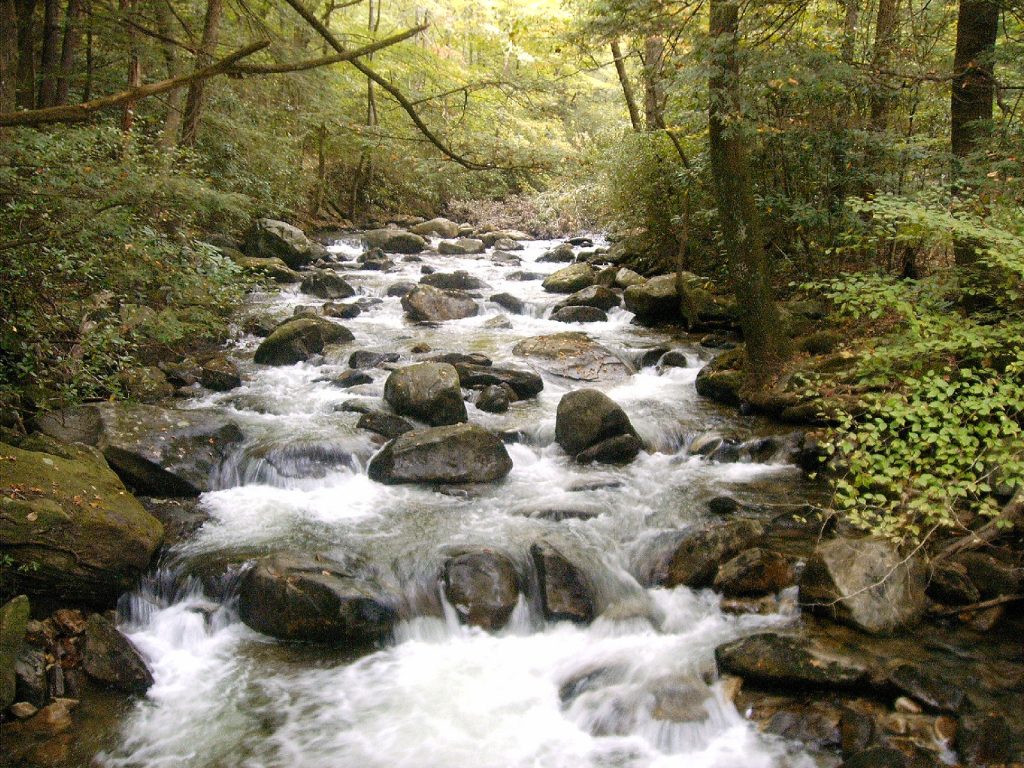
South Carolina
Jones Gap State Park
How to play: Nearly 4,000 acres comprise this South Carolina state park near the North Carolina border. Bisected by the Middle Saluda River, Jones Gap has boundaries that bleed into the Mountain Bridge Wilderness Area, which is flanked by Jones Gap to the east and Caesar’s Head State Park to the west. Together, this trifecta of protected lands is a sanctuary for Upstaters and western North Carolinians alike. Anglers in particular will appreciate the park’s wide variety of trout fishing opportunities along the Middle Saluda River, and Matthews or Julian Creeks. As springtime turns to summer, Jones Gap is the place to be for its ample waterfall and swimming hole options. Rainbow Falls is particularly stunning after a solid spring rain, and at over 100 feet in height, you’ll easily hear this behemoth long before you see it.
Where to stay: Trailside camping is available in Jones Gap State Park and the Mountain Bridge Wilderness Area with a permit and only at one of the 18 designated primitive sites. Camping at the campground ranges from $8 to $20 per site, per night.
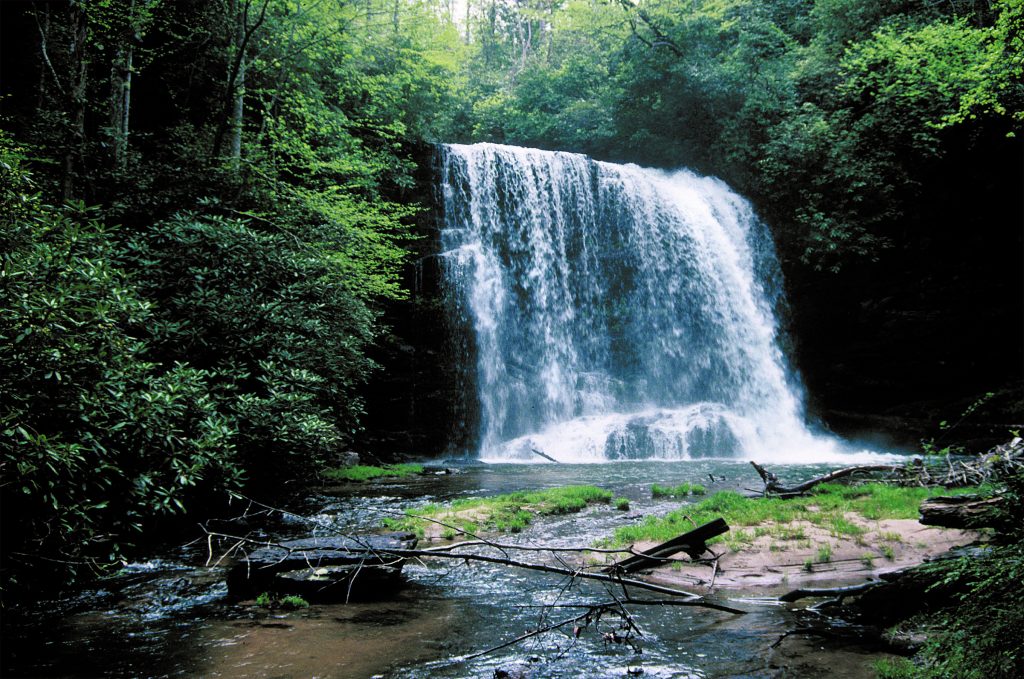
North Carolina
Gorges State Park
How to play: Once considered nothing more than an area in which to log and experiment with hydropower, Gorges State Park is now considered a jewel of western North Carolina for its explicit beauty and its importance as a haven for rare species. This 7,500-acre park extends all the way to the northern lip of Lake Jocassee where hikers can hop on a portion of the 76-mile Foothills Trail. Aptly named, the must-see stops in Gorges are, without a doubt, the numerous waterfalls that plunge through the Toxaway and Horsepasture gorges. The three-mile roundtrip Rainbow Falls hike is a popular excursion, both for the jaw-dropping power of the falls and for the rainbow itself that often arcs over the riverbank. Discover the pot of gold by continuing upstream about a quarter of a mile to Turtleback Falls for an unforgettable swimming hole.
Where to stay: Primitive camping can be found all along the Frozen Creek and Grassy Ridge Access Areas and is free of charge but not reservable. For those wishing to backpack along the Foothills Trail toward Lake Jocassee, there are six designated sites along the trail that can also be used on a first-come, first-serve basis. Campsites at Raymond Fisher Camp Area require about a 1.5-mile hike in and run $10 per night.
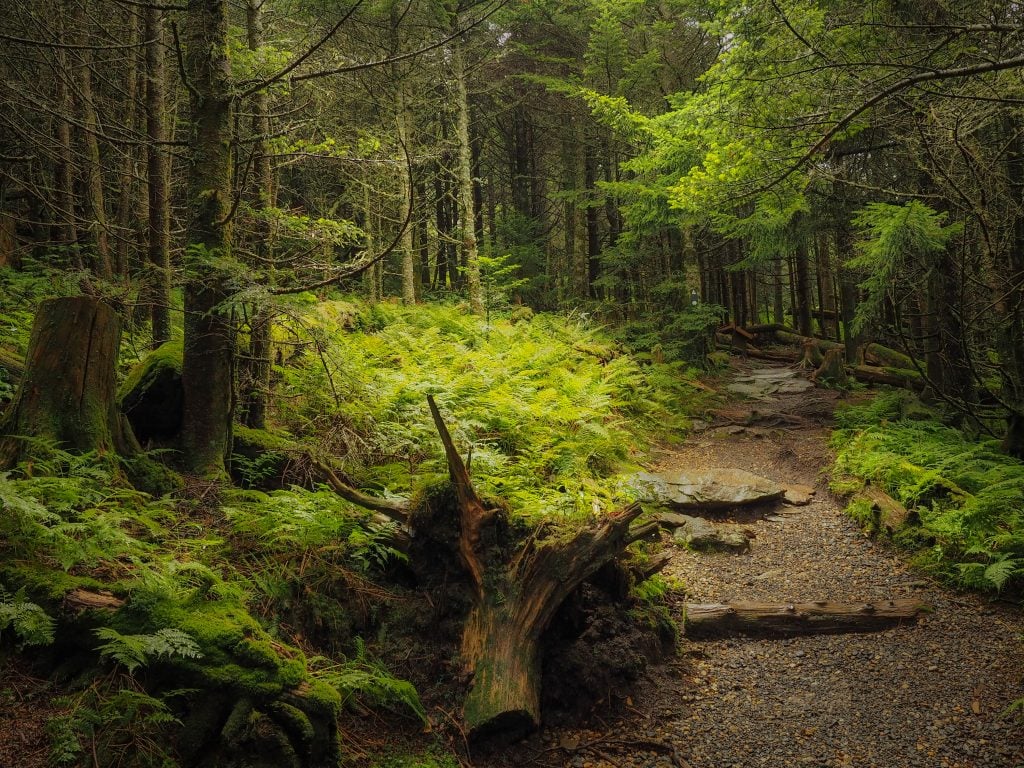
Mount Mitchell State Park
How to play: At 6,684 feet, the summit of Mount Mitchell rises higher than any other peak east of the Mississippi. The views from this sacred spot are expansive, dramatic, and well worth the strenuous six-mile hike up the Mount Mitchell Trail (though there is a quarter-mile summit trail from the parking lot, we’re not that type, and we’ll assume you’re not either). The trail takes hikers beneath the boughs of an ancient spruce-fir forest, not unlike that found in northern climates, before popping out of the tree cover. Even on the hottest of summer days, the temperature and weather atop Mount Mitchell can be unpredictable and often cold, so come equipped with proper layers. Another favorite hike in North Carolina’s first state park is the Deep Gap Trail, which begins near the summit of Mount Mitchell and traverses the Black Mountain range. Hikers will cross over Mount Craig, second in size to Mount Mitchell, and Big Tom Mountain as they follow the crest.
Where to stay: There are nine walk-in tent sites in the park and primitive camping for backpackers on Commissary Ridge open year-round. For hikers looking to tackle the Mount Mitchell Trail, the Black Mountain Campground is your best bet. Here you can directly access the trail, and at $22 per night for a maximum of two cars and eight people, it’s an affordable spot to crash with a group of friends (make sure you bring cash if you don’t reserve online). Just down the road is the similarly priced Carolina Hemlocks Recreation Area and Campground, which is a great destination unto its own.
[nextpage title=”Next Page”]

Tennessee
Roan Mountain State Park
How to play: For carpets of wildflowers and tunnels of rhododendron, for Blue Ridge Mountain panoramas atop expansive balds, look no further than Roan Mountain State Park. Appalachian Trail hikers have long treasured this particular section of white blazes as a breath of fresh air from the green tunnel. Hike the 14-mile stretch of the AT across Carvers Gap, cutting across Round Bald, Janes Bald, and Roan High Knob, for some of the most spectacular scenery in the Southeast. History buffs should be sure to make a stop at the Miller Farmstead. The historically preserved farmhouse and cluster of outbuildings were constructed in 1908 and remained occupied until as late as 1967. Given Roan’s reputation for harsh and unpredictable weather, the farmstead acts as a memorial to the hard-working subsistence Appalachian farmers who called these mountains home.
Where to stay: Pitch a tent in the woods or try to claim a spot at the Overmountain Shelter (though if you’re headed out on a weekend, the shelter will likely be crowded). Roan Mountain State Park has a 107-site campground and 30 cabins for rent, with tent sites beginning at $13.75 per night.
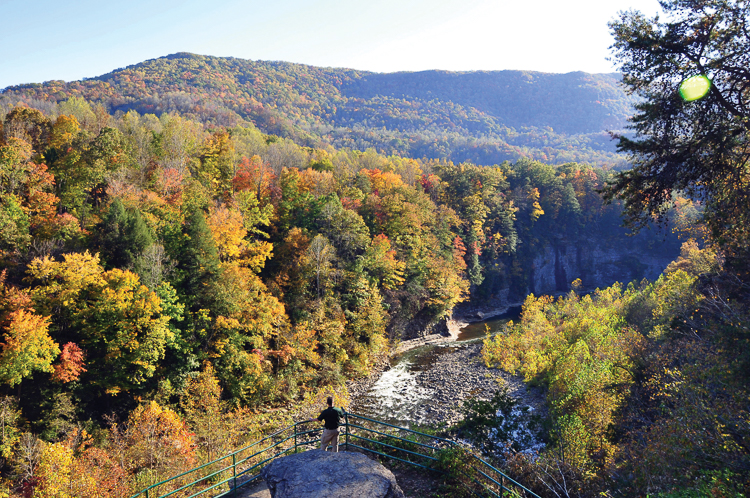
Kentucky
Breaks Interstate Park
How to play: Not quite a “state park,” but close enough, this 4,600-acre interstate park is one of only two interstate parks in the country. Straddling the border between southwestern Virginia and eastern Kentucky, the Breaks is managed by the two states. Its name dates back to the mid-18th century when Daniel Boone scoured the rugged cliffsides in search of a literal break in the 125-mile Pine Mountain ridgeline. If you’re a whitewater kayaker, the Pound and Russell Fork rivers are a literal wet dream, with regular release weekends and continuous whitewater to fit everyone’s skill level. Each fall, paddlers from near and far set up camp at the Breaks to paddle either the upper class II-IV stretches of the Russell Fork or the class IV-V gorge below. In some places, the canyon walls loom over 1,600 feet above the river. Climbers looking for an escape from established crags and weekend crowds elsewhere are now, as of last year, permitted to climb and establish routes at designated areas within the Breaks. Over 25 miles of established hiking and biking trails lead to many of these climbing areas, and if you’re planning on throwing up a route, stop by the Visitor’s Center to learn proper protocol and to pick up a free permit.
Where to stay: The park itself has a beautifully wooded campground with 138 sites, starting at $17 per night. Upgrades include sites with electric and water or, of course, a lakefront cabin or room at The Lodge.
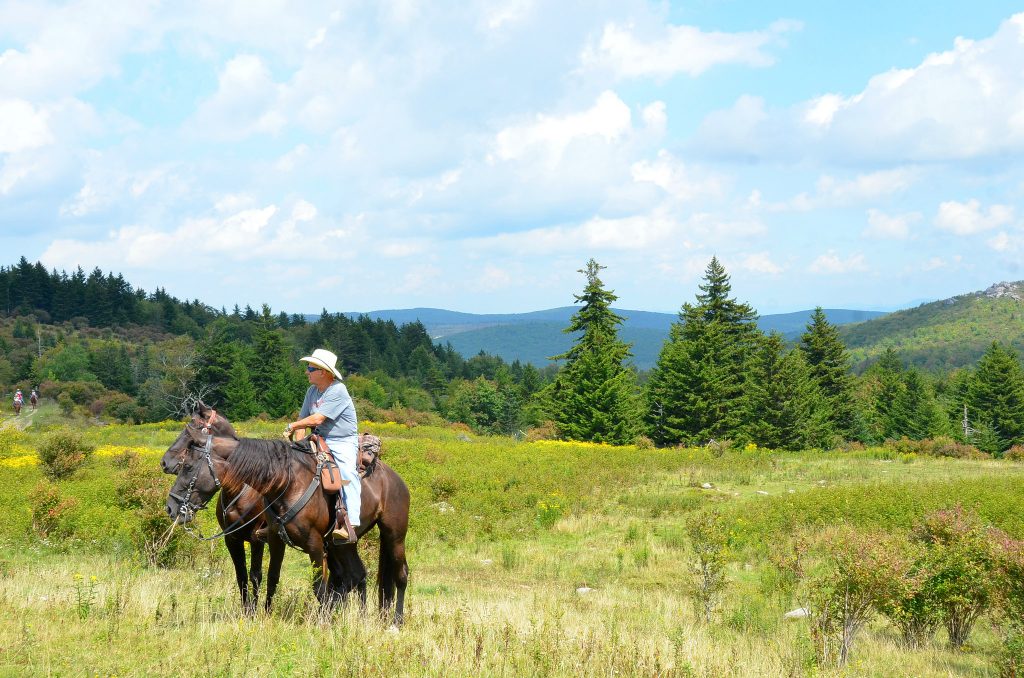
Virginia
Grayson Highlands State Park
How to play: One visit to Grayson Highlands State Park will forever change how you rank Southwest Virginia as an adventure destination. Sandwiched between the quaint communities of Independence and Damascus, Va., this high-elevation park provides front door access to Virginia’s tallest mountains—Mount Rogers and Whitetop. The park is also home to a resident miniature pony population, which is every bit as magical and endearing as it sounds. To properly experience the highlands, you’ll need a few days and a solid pair of hiking boots. Though a small portion of the Appalachian Trail runs through the park, check out the Rhododendron or Wilson Creek trails for the opportunity to gorge on wild blueberries or catch the elusive native brook trout. In addition to hikers and equestrians, boulderers are beginning to take more notice of the park for its plentiful boulderfields. The park has a bouldering guidebook on sale at the Visitor’s Center, and out-of-town climbers can even rent a crash pad for the day.
Where to stay: Backpackers will find no shortage of places to set up camp within the park, but for those who are trying to forgo the tent, space at the Thomas Knob Shelter fills up quickly. If you’re in need of a hot shower and some electricity, Grayson Highlands’ campground sites run about $20 per night.
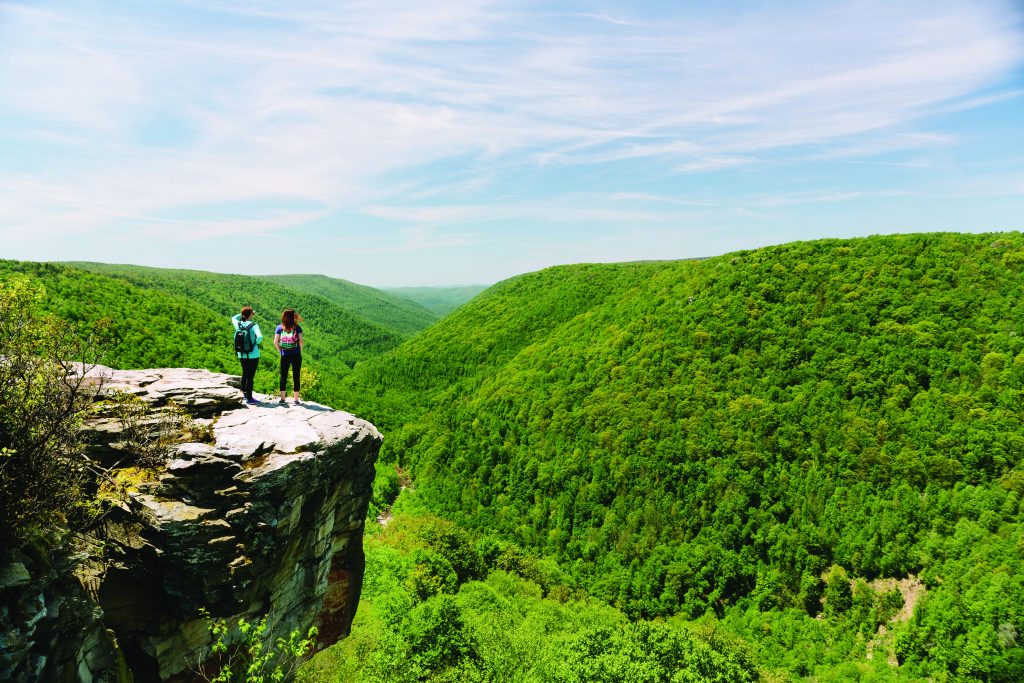
West Virginia
Blackwater Falls State Park
How to play: No matter the season, or the sport, Blackwater Falls State Park serves up the ultimate adventure sampler. Elite paddlers will tackle the classic class V Upper Blackwater, which runs regularly throughout the winter and spring months. If white-knuckling down a steep creek in the dead of winter with the potential for serious consequences isn’t for you (we don’t blame you), hikers and mountain bikers can take to the diverse offering of trails in the park, from the Blackwater Canyon rail-trail to the rooty goodness of the Balsam Fir Trail. Everyone should make a point of visiting the six-story falls for which the park is named. Here, the amber-colored waters of the river tumble over 60 feet into the canyon below, and after particularly brutal cold snaps, the falls often freeze over. After a solid snow, the park takes on an ethereal Narnia-like quality. Ski beneath the snow-laden limbs of hemlock and spruce trees on the park’s groomed cross-country ski trails, or grab a sled and take a run down the sledding hill. Year-round cyclists will even find some good fat biking here and can take a rip on one of Blackwater Bike’s rental rides.Where to stay: Open the last weekend of April until October 31, the Blackwater Falls campground is a primo place to post up. Sites start at $22 per night and can be reserved for up to two weeks at a time.
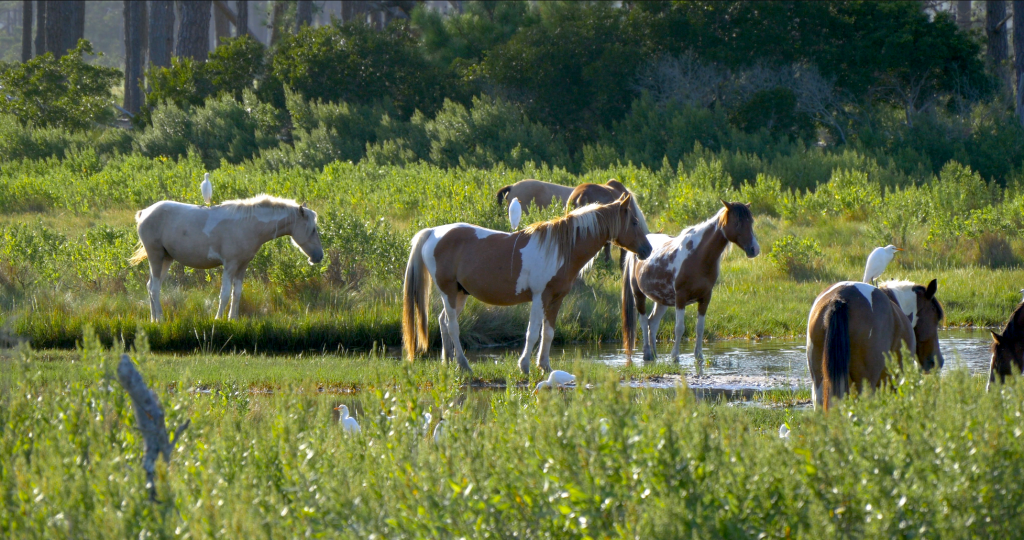
Maryland
Assateague State Park
How to play: Hemmed in by the crystal-blue waters of the Atlantic Ocean to the east and the Sinepuxent Bay to the west, Maryland’s only oceanfront state park is a quiet alternative for beach lovers. Nine miles south of the tourist bonanza that is Ocean City, Assateague caters to the adventurous tourists who aren’t afraid to work for their fun. Grab a sit-on-top kayak and paddle out past the break from the park’s boat launch facilities. Bring a rod for some saltwater angling, or hop off the boat and dig deep for clams. Paddling the western bayside shore of Assateague gets you up-close and personal with the island’s marsh environment where insular coves and plentiful waterfowl sightings will keep you exploring for hours. The island is biker-friendly, with a four-mile paved bike path running the length of the park, so you can access any part of the beach without the worry of traffic. Sunburns and mosquito bites aside, the only real concern you’ll have on Assateague is having your beach camp raided by feral horses.
Where to stay: From $11.75 a night, the Assateague State Park campground situates campers just a stone’s throw away from the beach, which is cordoned off from the campsites by sand dunes.
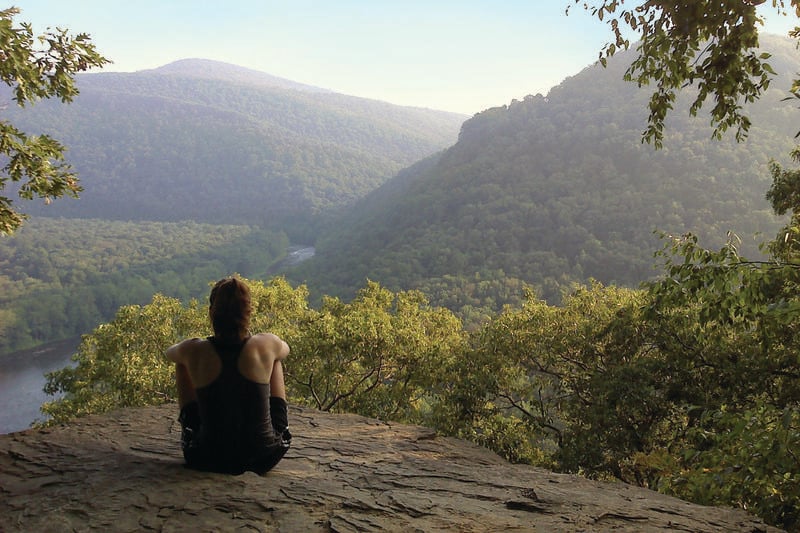
Pennsylvania
Laurel Ridge State Park
How to play: Be it the subtle shades of pink and white from blooming mountain laurel or the vibrant squash oranges and yellows of peaking fall foliage, this southwestern Pennsylvania jewel of a park is stunning in every season. Its backbone and namesake, the Laurel Highlands Hiking Trail, traces the Laurel Mountain ridgeline for 70 miles from the Youghiogheny River in Ohiopyle to the Conemaugh Gorge near Johnstown. Though backpacking and day hiking are the most popular adventures in the park, there are a number of sections of the Laurel Highlands Hiking Trail that, given the right amount of snow, are navigable by cross-country ski. Additionally, the park operates a cross-country ski touring concession where visitors can rent skis, take ski lessons, and skate on over 18 miles of groomed trails. Not a skier? Rent a pair of snowshoes for the day! Snowshoeing is a rewarding way to take to the trails, but some coordination is required.
Where to stay: Hikers can opt for a lightweight setup and ditch the tent on the Laurel Highlands Hiking Trail, as there are eight shelters situated every six to 12 miles along the trail’s 70-mile route. Traditional car campers will want to stake a site at the Laurel Ridge State Park campground, where you can grab a site starting at $17 per night.
[nextpage title=”Next Page”]
Best of the Rest
More of our favorite state parks, forests, and recreation areas:
Coopers Rock State Forest, Bruceton Mills, West Virginia
How to play: Rope up on the Sunset Wall and The Big Blocks climbing areas. With over 50 routes ranging from 5.2 through 5.12, these walls afford the out-of-town climber a tantalizing taste of the endless climbing Coopers Rock has to offer.
Where to stay: Pitch a tent at the state forest campground for $28 per night. All sites come with electric and WiFi is available.
North Bend State Park, Cairo, West Virginia
How to play: Bring the entire family for a bike ride along the North Bend Rail Trail. This 72-mile multiuse trail takes visitors back in time through historic tunnels and railroad hubs from decades past.
Where to stay: Two campgrounds, River Run and Cokeley Campgrounds, offer out-of-towners plenty of chances to rough it with sites starting at $22 per night. For a few modern-day luxuries, the lodge has rooms starting $60 per night during the week.
Douthat State Park, Millboro, Virginia
How to play: Loop up the 18.2-mile Douthat IMBA Epic. The park’s 40 miles of singletrack here can be fast and dry or rocky and technical, so pick your poison.
Where to stay: Sites at the park campground start at $26 per night for standard sites. A popular option among groups of riders staying for the weekend is to throw down on a cabin, which requires a minimum two-night stay and starts at $62 per night.
New River Trail State Park, Max Meadows, Virginia
How to play: Hike, bike, or ride your horse along this 57-mile linear park. Most of the trail follows the New River as it winds through four southwest Virginian counties and countless historical sites.
Where to stay: You won’t find any cabins here, but there are four primitive campgrounds you’ll encounter along the way. Rates start at $15 per site.
Frozen Head State Park, Wartburg, Tennessee
How to play: Learn firsthand why competitors in the now notorious Barkley Marathons consider Frozen Head’s terrain some of the steepest, and most beautiful, in the region. Hike the Lookout Tower Trail and climb the fire tower for outstanding 360-degree views of the Cumberland Plateau and the Great Smoky Mountains.
Where to stay: Reserve early for one of Frozen Head’s 10 backcountry tent sites along the park’s 50+-mile trail system. Not into backpacking but still want a primitive camping feel? There are two campgrounds here, Flat Fork and Big Cove, offering sites ranging from $13.75-$24 per site, per night.
Pine Mountain State Resort Park, Pineville, Kentucky
How to play: Hike all 12 miles of trails within the park to exotic points of interest like Chained Rock, Hemlock Garden, and Honeymoon Falls.
Where to stay: Two double bed rooms at the lodge start at $53.96 per night.
Cumberland Falls State Resort Park, Corbin, Kentucky
How to play: Take a trek to the 125-foot-wide curtain of water for which this state park was named. If the skies are clear, and a full moon is out, consider hiking at night to catch a glimpse of the moonbow, or lunar rainbow, which appears at the base of the falls.
Where to stay: Stake out camp at the Cumberland Falls campground. Tent sites run about $17 per night while standard campsites start at $22 per night.
DuPont State Recreational Forest, Cedar Mountain, NC
How to play: Set off on a six-mile hike early. You’ll want plenty of time to take pictures of, and dips in, the six stunning waterfalls you’ll pass along the way, many of which were featured in the hit blockbuster The Hunger Games.
Where to stay: There’s no camping allowed within forest boundaries, but just four miles down the road is Black Forest Family Camping Resort. Basic tent sites run about $31 per night if you bring cash.
Table Rock State Park, Pickens, South Carolina
How to play: Rent a kayak for $5 per half-hour to float-and-fish the scenic, 36-acre Lake Pinnacle.
Where to stay: Visitors can stay at the park’s campground for $25 per night or at one of the park’s six primitive trailside sites for $17 per night per site.
Cloudland Canyon State Park, Rising Fawn, Georgia
How to play: Experience the spectacular 1,000-foot gorge on any number of Cloudland’s 30 miles of trails, which are open to hikers and bikers alike.
Where to stay: On a budget? Backcountry campsites in the park are only $8 per night. For a more unique lodging experience, check out one of the yurts starting at $100 per night.
Amicalola Falls State Park, Dawsonville, Georgia
How to play: Hike to the base of the 729-foot Amicalola Falls, considered the tallest cascading waterfall in the Southeast, before trekking the 8.5 miles north along the Appalachian Trail to get a taste of thru hiker life.
Where to stay: Campsites at the park start at $40 per night, but for a truly authentic lodging experience, hike to the Len Foote Hike Inn, which requires a five-mile trek in. Single occupancy rates are $122 per night, but include a family-style dinner and breakfast.
